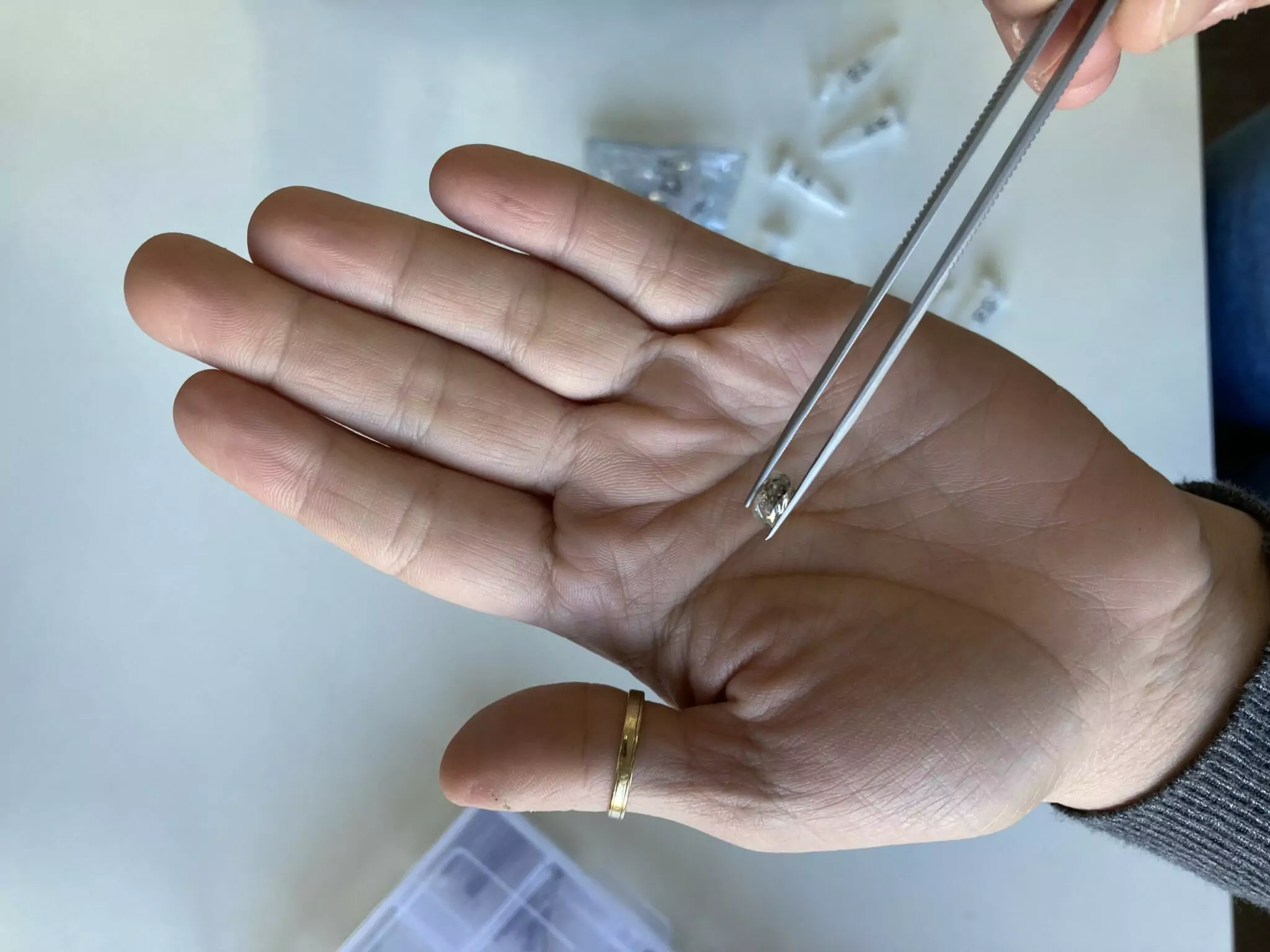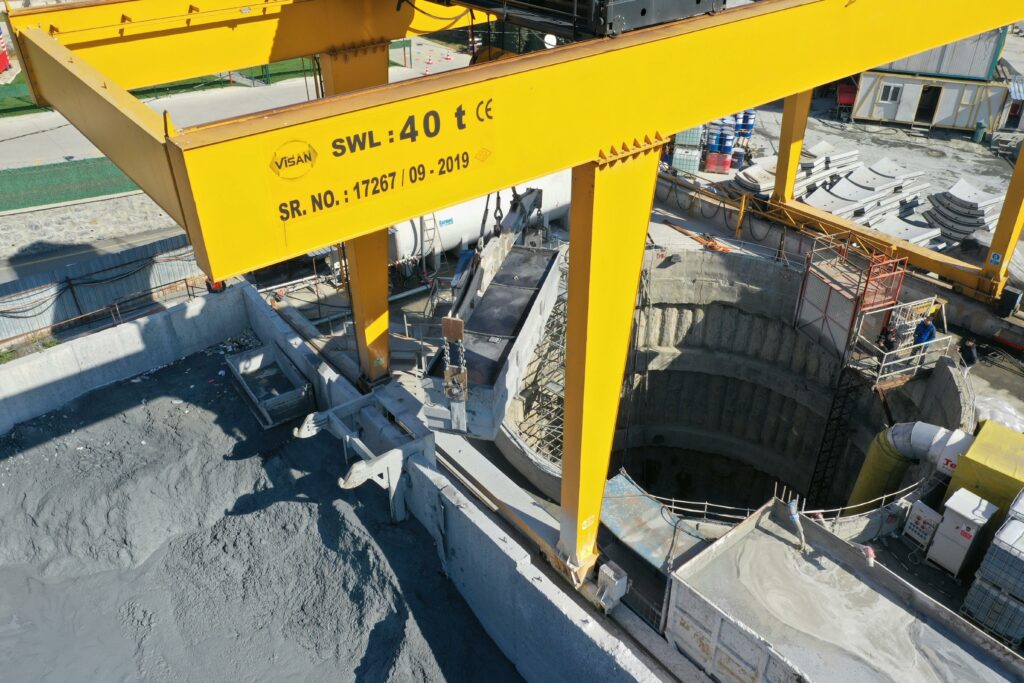
Investigating Deep Earth with Diamonds: a Shiny Journey to the Center of Our Planet
Imagine embarking on a thrilling adventure akin to Jules Verne’s classic tale “Journey to the Centre of the Earth,” where curiosity knows no bounds. It’s not just scientists, but adventurers from all walks of life who yearn to uncover the mysteries hidden within our planet’s depths. Did you know that if we were to slice open a significant portion of the Earth, it might reveal a surprising hue of green? That’s because deep within the Upper Mantle, the predominant mineral is olivine, casting a greenish tint over its terrain.
Now, let’s journey alongside geoscientists as they delve into the heart of our planet, armed with remarkable tools like Super deep diamonds. These diamonds, unlike any other, possess extraordinary strength, allowing scientists to investigate the chemical and physical conditions of the deep Earth like never before. But first, we will go through a bit of background information about the Earth and its inner layers to show the importance of researching with these diamonds.

How do geoscientists investigate the deep Earth?
Imagine trying to understand what’s inside a locked box without opening it. Geoscientists have a similar challenge when it comes to studying the deep Earth, but they have clever ways to learn more.
Even with the advanced technology available to scientists today, drilling into the deep parts of our planet remains impossible. Knowledge about the internal composition of our planet is limited. The deepest drilled hole into the Earth, known as the Kola Superdeep Borehole in Russia, reached a depth of only 12 km. This hole allowed for the collection of samples from the crust, the most superficial layer of our planet. Most of our understanding of the deeper parts of the Earth is derived from studies analyzing seismic waves from earthquakes and with experimental petrology.

By analyzing seismic waves emitted by earthquakes, known as P and S waves, scientists have been able to discover and distinguish between different layers within the Earth. P waves, or primary waves, are compressional and travel fastest, moving through both solid and liquid layers. They push and pull particles in the direction of the wave’s travel. In contrast, S waves, or secondary waves, are slower and only move through solids, shaking the ground perpendicular to their direction of travel. This distinct behavior is dependent on the densities of the Earth’s inner layers. For instance, S waves cannot travel through liquids, whereas P waves can. Through the study of the direction and transmission of these waves, geophysicists determined that the outer part of the Earth’s core is liquid. Over time, scientists have used this knowledge to establish that the Earth consists of four main layers: the crust, mantle, outer core, and inner core. By analyzing the behavior of these waves, geologists can infer the composition and state of Earth’s internal layers, aiding in the study of tectonic activities and the planet’s structural properties.
Within the field of experimental petrology, geoscientists simulate the pressure and temperature conditions of the various layers of the Earth’s interior, allowing them to replicate the stability of minerals found inside each layer. In numerous experiments, experimental petrologists have corroborated findings made by geophysicists using seismic waves. For instance, the mantle transition zone, a region from 410 to 660 km deep within the Earth where P- and S-waves propagate more rapidly, has been confirmed by petrologists. They affirmed that a transition in mineral structure occurs in this part, where minerals become denser.

Another way of exploring the deep Earth is by looking at special rocks called mantle xenoliths. These rocks come to the surface during volcanic eruptions and they are like secret messengers from the lithosphere, the layer beneath the Earth’s crust that extends down to about 250 kilometers. These rocks are mainly made up of minerals rich in elements like silicon, magnesium, iron, calcium, and aluminum.
But what about going even deeper? That’s where diamonds come in! Yes, diamonds aren’t just pretty gems; they’re also valuable for science. Diamonds can form deep inside the Earth, and sometimes they get pushed up closer to the surface through volcanic activity. Scientists can study these diamonds to learn about what’s happening way down below, beyond the 250-kilometer mark. By studying diamonds, scientists can uncover more secrets about how the Earth has changed over time.
So, in short, these special rocks and diamonds act like secret keys that help scientists unlock the mysteries of the Earth’s deep interior. Understanding our planet’s past and present is crucial for figuring out how it will change in the future.
Diamond: the hardest mineral on the Planet

Mineralogists employ a standardized system known as the ‘scale of minerals’ to quantitatively assess the relative hardness of various minerals. This scale serves as a crucial tool for understanding the physical properties of minerals, offering insights into their internal structural, chemical bonding, and elemental composition. This scale is named “The Mohs hardness scale” and provides a comparative framework where Diamond reigns supreme as the hardest mineral.
Diamond, with its remarkable hardness, owes its resilience to its unique molecular structure, consisting of inorganic carbon atoms arranged in a tetrahedral lattice coordination. Within this lattice, each carbon atom forms strong covalent bonds with four neighboring carbon atoms, resulting in an exceptionally rigid framework. Covalent bonds are renowned for their strength, characterized by the sharing of electron pairs between atoms, making them highly resistant to breaking.
This inherent toughness makes diamonds exceptionally durable, capable of withstanding extreme pressures and temperatures found deep within the Earth’s mantle. As diamonds form under extreme geological conditions, they undergo a transformation from carbon-rich fluids to solid crystalline structures. This process, known as diamond crystallization, occurs deep within the Earth’s mantle at depths exceeding 150 kilometers.
Diamonds’ journey to the Earth’s surface occurs by kimberlitic volcanism, a type of volcanic activity associated with explosive eruptions. Kimberlite magma, highly rich in volatiles, erupts violently from deep within the mantle, carrying diamonds along its path. However, this ascent is fraught with challenges; diamonds must endure the corrosive and reactive nature of the surrounding magma rich in volatiles, such as carbon dioxide and water vapor, as they traverse the Earth’s crust.
Upon reaching the surface, diamonds are often found within kimberlite pipes, vertical columns of volcanic rock formed during explosive eruptions. These pipes serve as conduits for diamonds, providing a pathway from the depths of the Earth to its surface. The discovery of diamond-bearing kimberlite pipes has been instrumental in diamond mining operations, enabling the extraction of these precious gemstones for various industrial and ornamental purposes.
In summary, diamonds epitomize nature’s ingenuity, embodying both exceptional hardness and resilience. Their formation deep within the Earth’s mantle, ascent through kimberlitic volcanism, and eventual deposition within kimberlite pipes offer a glimpse into the dynamic processes shaping our planet’s geology. Understanding the origins and properties of diamonds not only informs geological research but also underpins their economic significance and cultural value.

Diamond as a time-capsule: gathering evidence about the deep Earth
Let’s dive deeper into the extraordinary world of diamonds, where secrets of the Earth’s deep interior are locked away.
The majority of diamonds originate in the lithosphere, a region spanning depths of about 130 to 250 kilometers beneath the Earth’s crust. However, a select few, known as sublithospheric diamonds, emerge from much greater depths. These rare gems crystallize at astonishing depths, with evidence suggesting formations occurring anywhere from approximately 300 kilometers to a staggering 1,000 kilometers within the Earth’s mantle.
Diamonds possess exceptional durability and resistance, rendering them invaluable repositories of geological history. As they crystallize and grow, diamonds have the remarkable ability to capture and encapsulate surrounding elements and compounds, such as gases, melts, and other minerals, within their crystalline lattice. This feature allows diamonds to preserve a wealth of information about the complex processes occurring deep within the Earth.
For geoscientists, particularly mineralogists and geochemists, these inclusions within diamonds are like windows into the Earth’s inner workings. By analyzing these inclusions, scientists gain insights into the chemical composition and conditions prevailing within the regions where diamonds formed. For example, mineral inclusions can provide clues about the pressure conditions under which the diamond crystallized, offering valuable data about the depth of its origin.
Similarly, melt inclusions trapped within diamonds offer glimpses into the composition and characteristics of magmas deep within the Earth. By studying these melt inclusions, scientists can reconstruct the complex processes involved in magma formation and evolution, offering insights into the dynamics of the Earth’s interior.
Fluid inclusions represent another intriguing aspect of diamond research. These inclusions consist of fluid phases trapped within the diamond’s lattice during crystallization, providing evidence of fluid compositions and conditions prevailing during diamond growth. By analyzing fluid inclusions, scientists can gain insights into the chemical and physical processes occurring within the Earth’s mantle.
In essence, the investigation of Super deep diamonds and their inclusions serves as a gateway to the deeper realms of the Earth’s mantle. By deciphering the secrets held within these precious gemstones, scientists can unravel the complex history of our planet’s evolution, from its primordial beginnings to the present day. This knowledge is crucial for advancing our understanding of Earth’s internal processes and dynamics, ultimately shaping our perception of the planet’s past, present, and future.
